Donghyeon Park
Culinary Class Wars: Evaluating LLMs using ASH in Cuisine Transfer Task
Nov 04, 2024

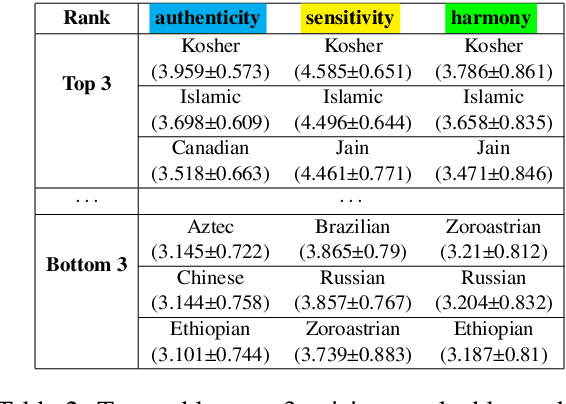
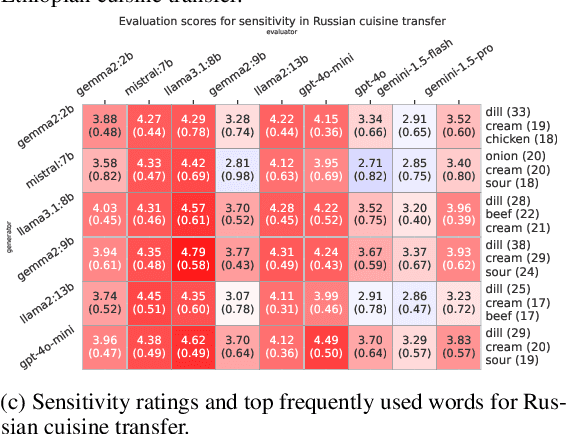
Abstract:The advent of Large Language Models (LLMs) have shown promise in various creative domains, including culinary arts. However, many LLMs still struggle to deliver the desired level of culinary creativity, especially when tasked with adapting recipes to meet specific cultural requirements. This study focuses on cuisine transfer-applying elements of one cuisine to another-to assess LLMs' culinary creativity. We employ a diverse set of LLMs to generate and evaluate culturally adapted recipes, comparing their evaluations against LLM and human judgments. We introduce the ASH (authenticity, sensitivity, harmony) benchmark to evaluate LLMs' recipe generation abilities in the cuisine transfer task, assessing their cultural accuracy and creativity in the culinary domain. Our findings reveal crucial insights into both generative and evaluative capabilities of LLMs in the culinary domain, highlighting strengths and limitations in understanding and applying cultural nuances in recipe creation. The code and dataset used in this project will be openly available in \url{http://github.com/dmis-lab/CulinaryASH}.
CookingSense: A Culinary Knowledgebase with Multidisciplinary Assertions
May 01, 2024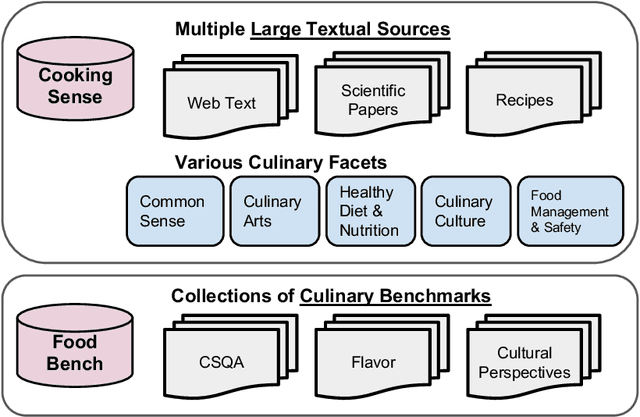

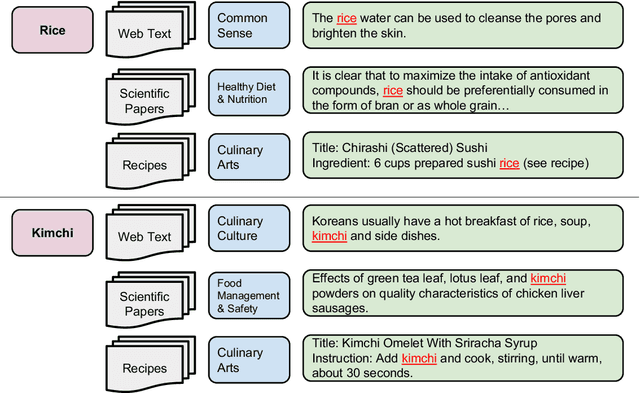
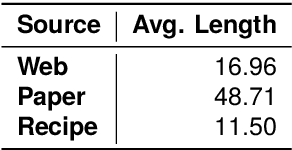
Abstract:This paper introduces CookingSense, a descriptive collection of knowledge assertions in the culinary domain extracted from various sources, including web data, scientific papers, and recipes, from which knowledge covering a broad range of aspects is acquired. CookingSense is constructed through a series of dictionary-based filtering and language model-based semantic filtering techniques, which results in a rich knowledgebase of multidisciplinary food-related assertions. Additionally, we present FoodBench, a novel benchmark to evaluate culinary decision support systems. From evaluations with FoodBench, we empirically prove that CookingSense improves the performance of retrieval augmented language models. We also validate the quality and variety of assertions in CookingSense through qualitative analysis.
KitchenScale: Learning to predict ingredient quantities from recipe contexts
Apr 21, 2023Abstract:Determining proper quantities for ingredients is an essential part of cooking practice from the perspective of enriching tastiness and promoting healthiness. We introduce KitchenScale, a fine-tuned Pre-trained Language Model (PLM) that predicts a target ingredient's quantity and measurement unit given its recipe context. To effectively train our KitchenScale model, we formulate an ingredient quantity prediction task that consists of three sub-tasks which are ingredient measurement type classification, unit classification, and quantity regression task. Furthermore, we utilized transfer learning of cooking knowledge from recipe texts to PLMs. We adopted the Discrete Latent Exponent (DExp) method to cope with high variance of numerical scales in recipe corpora. Experiments with our newly constructed dataset and recommendation examples demonstrate KitchenScale's understanding of various recipe contexts and generalizability in predicting ingredient quantities. We implemented a web application for KitchenScale to demonstrate its functionality in recommending ingredient quantities expressed in numerals (e.g., 2) with units (e.g., ounce).
* Expert Systems with Applications 2023, Demo: http://kitchenscale.korea.ac.kr/
RecipeMind: Guiding Ingredient Choices from Food Pairing to Recipe Completion using Cascaded Set Transformer
Oct 14, 2022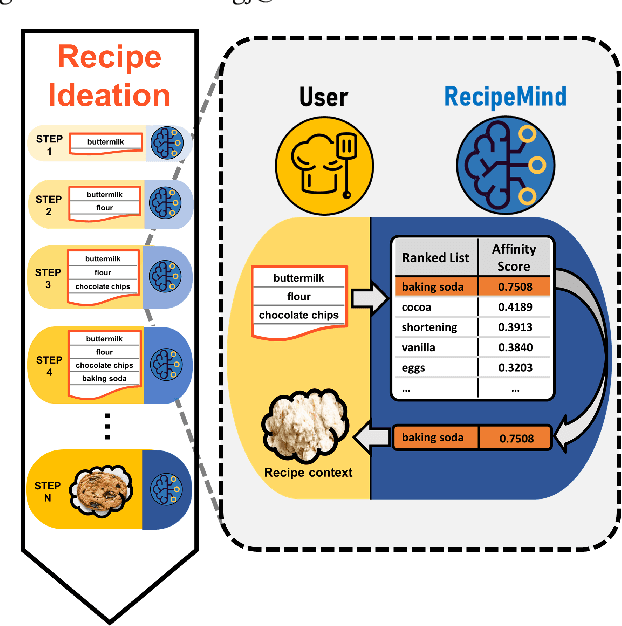

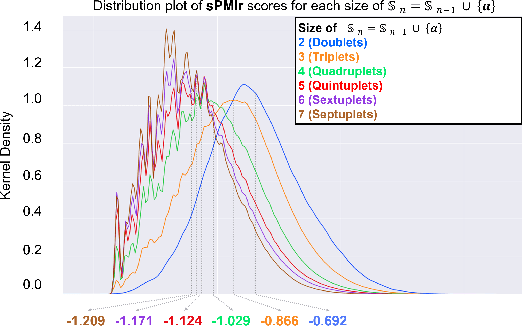
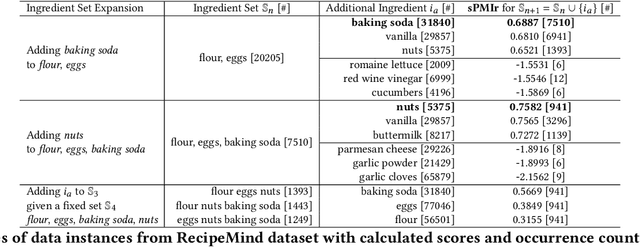
Abstract:We propose a computational approach for recipe ideation, a downstream task that helps users select and gather ingredients for creating dishes. To perform this task, we developed RecipeMind, a food affinity score prediction model that quantifies the suitability of adding an ingredient to set of other ingredients. We constructed a large-scale dataset containing ingredient co-occurrence based scores to train and evaluate RecipeMind on food affinity score prediction. Deployed in recipe ideation, RecipeMind helps the user expand an initial set of ingredients by suggesting additional ingredients. Experiments and qualitative analysis show RecipeMind's potential in fulfilling its assistive role in cuisine domain.
KitcheNette: Predicting and Recommending Food Ingredient Pairings using Siamese Neural Networks
May 16, 2019



Abstract:As a vast number of ingredients exist in the culinary world, there are countless food ingredient pairings, but only a small number of pairings have been adopted by chefs and studied by food researchers. In this work, we propose KitcheNette which is a model that predicts food ingredient pairing scores and recommends optimal ingredient pairings. KitcheNette employs Siamese neural networks and is trained on our annotated dataset containing 300K scores of pairings generated from numerous ingredients in food recipes. As the results demonstrate, our model not only outperforms other baseline models but also can recommend complementary food pairings and discover novel ingredient pairings.
 Add to Chrome
Add to Chrome Add to Firefox
Add to Firefox Add to Edge
Add to Edge